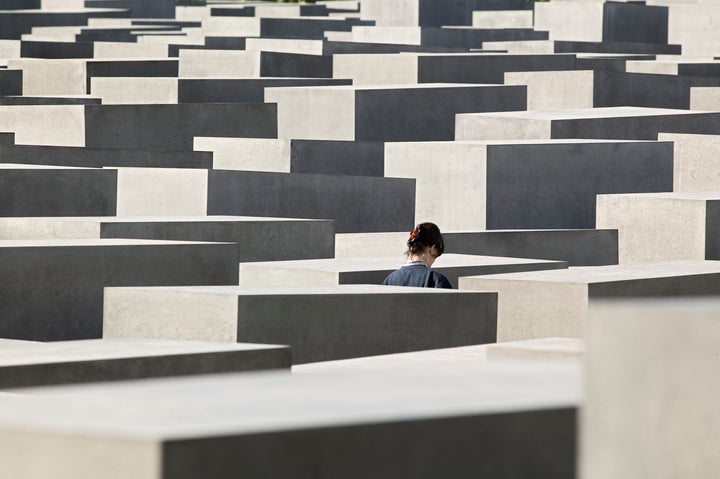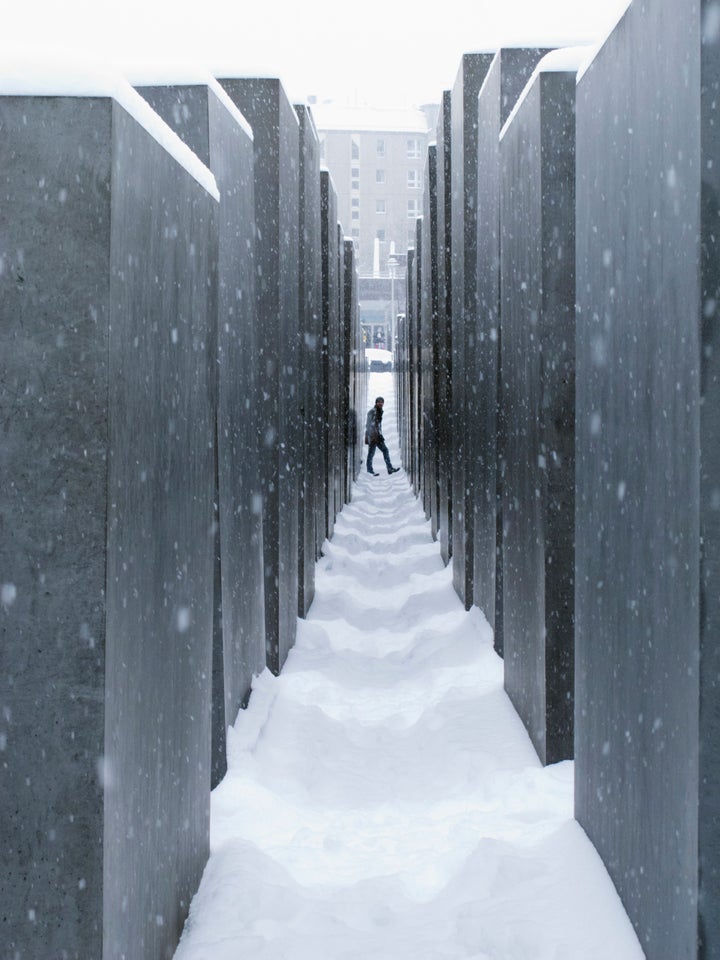
You might have encountered them at some point, scrolling through your Instagram feed or swiping through dating apps. Pictures of people who, for whatever reason, decided to immortalize their trips to Berlin’s Holocaust Memorial with a selfie. Some individuals stare pensively at the camera, others flash a peace sign or strike a yoga pose, all on ground that mourns and remembers the mass extinction of Jewish people.
A 28-year-old Israeli-German writer and artist by the name of Shahak Shapira has taken it upon himself to publicly shame such individuals with his project “Yolocaust,” which has gained traction on the internet over the past week. The web-based piece references the acronym “YOLO,” or the unofficial motto of all bad decisions made circa 2011, meaning “you only live once.”
Shapira scoured social media to find 12 of the most egregious examples of inappropriate selfie-taking at the Berlin memorial. He then published them on his a website ― without the consent of those pictured. At first the photos appear to be featured as-is, but when users hover over an image, each background is replaced with a grisly scene from the death camps, so that a tourist juggling for the camera is suddenly performing amid stacks of naked, emaciated corpses.
In an interview with The BBC, Shapira explained how he had begun thinking about the piece, which launched on Jan. 18, last year. “It’s a phenomenon I had begun to notice in Berlin and then I started seeing those pictures everywhere,” he said. “I felt like people needed to know what they were actually doing, or how others might interpret what they were doing.”

This is not the first art project to examine the rituals of our social media generation ― and how camera-happy tactics can easily offend ― through the lens of the Holocaust Memorial. Artist Marc Adelman’s 2012 project “Stelen (Columns)” featured 100 images of men posing at the memorial, culled from various gay dating websites.
Adelman did not seek permission from his subjects before using their images in his work. As a result, one of the people pictured eventually sought legal action against the artist, and the project was removed from New York’s Jewish Museum as a result.
Shapira didn’t ask permission of his subjects, either. His self-described compromise for publicly humiliating the strangers, however, is agreeing to remove the images if the subjects simply email undouche.me@yolocaust.de.
Peter Eisenman, the New York architect who designed the memorial, has been critical of Shapira’s project. “To be honest with you I thought it was terrible,” he told The BBC. As the memorial’s creator, he intended the space to interact with visitors in a variety of ways without judgment or recourse.
“People have been jumping around on those pillars forever,” he said. “They’ve been sunbathing, they’ve been having lunch there and I think that’s fine. It’s like a catholic church, it’s a meeting place, children run around, they sell trinkets. A memorial is an everyday occurrence, it is not sacred ground.”
Shapira seems somewhat impervious to criticisms of his project, preferring to take an amoral stance. “If you’re asking me is this right or wrong, then that’s a good thing,” he said. “It doesn’t have to be one or the other, just having the debate is good.”
In a response to the question “Isn’t this disrespectful toward the victims of the Holocaust?” ― an inquiry that could refer to either the actions of selfie-takers or Shapira himself ― the artist writes on his website: “Yes, some people’s behavior at the memorial site is indeed disrespectful. But the victims are dead, so they’re probably busy doing dead people’s stuff rather than caring about that.”
While taking selfies at a Holocaust memorial is certainly not exemplary, or even acceptable, behavior, humiliating strangers using gruesome imagery might not be the most fruitful way to start a meaningful dialogue. You can see Shapira’s “Yolocaust” here and judge for yourself.
Correction: A previous edition of this article stated that people were killed at the site of the Holocaust Memorial during the Holocaust. This is false and we regret the error.

